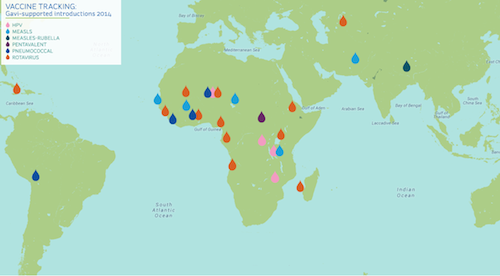To maximize vaccines’ impact on global health, researchers and policymakers need to both develop new vaccines for additional diseases and improve their supply and delivery in developing countries, a review of vaccine development challenges in Science Translational Medicine argues.
The authors include Walter Orenstein, MD and Katherine Seib, MSPH, from Emory Vaccine Center and Seth Berkley, MD and Duncan Graham-Rowe from Gavi, the Vaccine Alliance, an international organization supporting access to vaccines in low and middle-income countries.
Orenstein is associate director of the Emory Vaccine Center and professor of medicine at Emory University School of Medicine, and Seib is research manager in Emory’s Division of Infectious Diseases. Berkley is chief executive officer of Gavi, and Duncan Graham-Rowe is a scientific editor working for Gavi.
“Vaccines are incontrovertibly one of the most successful and cost-effective disease prevention strategies ever implemented,” the authors write. “Vaccines that remain in the vial are 0% effective. Historically, one of the biggest challenges for vaccines in global health has been getting existing vaccines out to the people who need them.”
The authors summarize the large-scale health benefits of preventing several diseases around the world, ranging from smallpox to polio and measles, and in preventing cancers such as those caused by hepatitis B and human papillomavirus. The authors also examine five “high-burden” infectious diseases for which vaccine development has been a particular challenge because of rapid mutation and poor understanding of the human immune responses needed to induce high levels of persistent protection against disease: malaria, dengue, tuberculosis, influenza and HIV.
“The progress expected in the next decade will lead to the prevention of ever greater health burdens,” the authors write. “However, to maintain this impact and to achieve the full potential vaccines have to offer, current efforts, using existing vaccines, must be sustained and even bolstered. And new vaccines, now under development or to be developed in the future, must be made available to all countries with populations that could benefit from those vaccines.”
Despite vaccines’ successes, millions of children in developing countries are not fully immunized with six basic vaccines recommended by the World Health Organization. In addition, climate change, urbanization and deforestation have contributed to an increased number of cases of some diseases such as yellow fever and cholera.
To ensure widespread access, policymakers should subsidize vaccines in developing countries while avoiding driving vaccine prices down so low that private industry will withdraw, the authors argue. To meet delivery challenges, improved supply chain management, and development of vaccines that do not require refrigeration, or are not administered by needle and syringe, will be important, the authors write.

